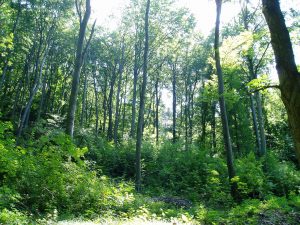To integrate wood production with biodiversity protection and other regulating and cultural ecosystem services through close-to-nature forest management, and at the same time actively adapt forest ecosystems to climate change.:
- Restoration of the natural forest structures: to promote mixed forests, diverse, uneven-aged and multi-storey forest structures, to protect natural forest ecosystems and old trees, to optimize retention of standing and lying dead wood, to prioritize native and site-adapted tree species, to support rare and endangered tree species, to improve cultural forest functions and their aesthetic values
- Increasing ecological stability: to reduce the impacts of abiotic and biotic pests, large-scale forest disturbances through the restoration of naturalness of forest ecosystems
- Improving cost-efficiency of silvicultural operations: to prioritize natural regeneration, to use natural processes in a particular way for tending of young forest stands as well as to promote forest regeneration
- Improving the quality of growing stock: to target increment of wood on trees of highest quality, to improve the quality of produced timber, and to ensure the timber yields balanced in time

